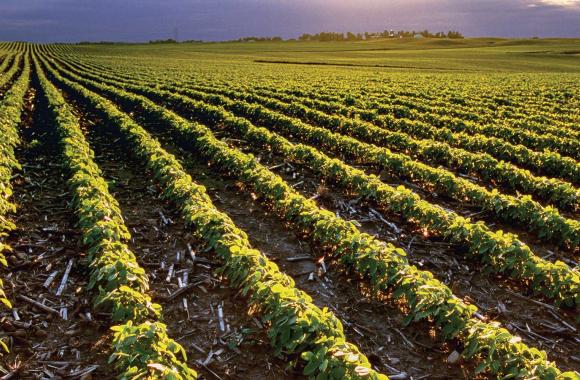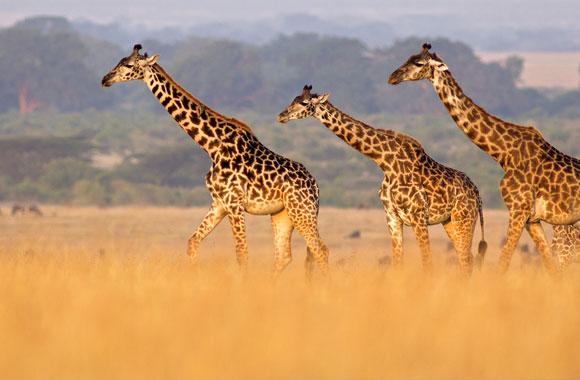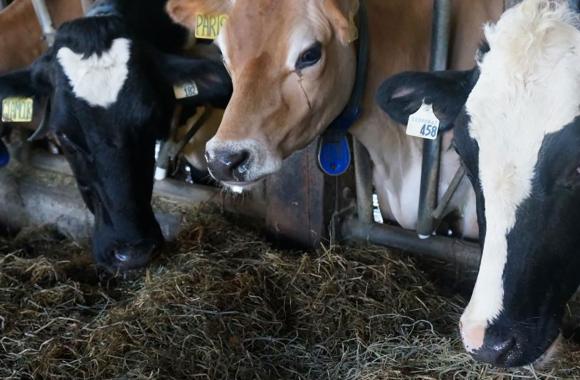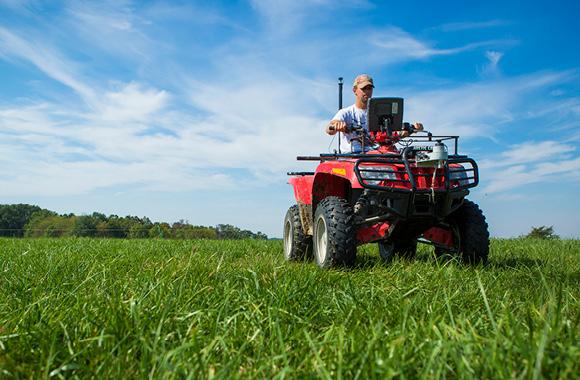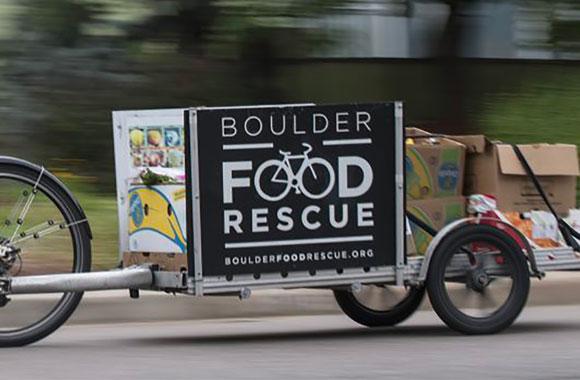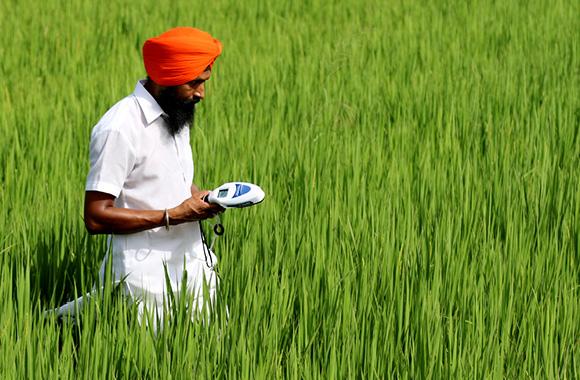Improved Manure Management
Livestock manure produces methane, a potent greenhouse gas. Advanced technologies and practices for managing manure can reduce the adverse climate impact of animal agriculture.
Reduced/Sequestered
2020–2050
To Implement
Operational Savings
Impact
Practices such as reducing storage time and technologies such as covered lagoons can reduce the climate impact of livestock manure by 3.34–6.09 gigatons of carbon dioxide equivalent from 2020 to 2050. Implementing these practices and technologies comes at a net lifetime cost of US$1.27–2.99 billion.
Introduction
Project Drawdown’s Improved Manure Management solution involves strategies that lower manure methane emissions in cattle and pig production systems. This solution focuses on two strategies in liquid manure management: reducing storage time and covering anaerobic lagoons. These solutions replace conventional long-term storage in manure pits and slurry systems and uncovered anaerobic lagoons. Both reduce methane without increasing nitrous oxide emissions in dairy, beef, and swine systems.
Farmers can decrease storage time by spreading manure daily on land. This may be suitable for smaller operations or those that have enough land to accommodate the manure. Land application introduces nutrients in the form of nitrogen and phosphorus that benefit crops.
Installing tightly sealed, impermeable coverings on existing anaerobic lagoons makes it possible to capture the methane gas produced and utilize it as fuel. This reduces emissions of methane, a potent greenhouse gas, and controls odors.
Methodology
Total Addressable Market
We projected the amount of global manure production associated with meat (cattle and pigs) and milk (cattle) through 2050 based on our assumption that all demand for livestock protein shown in Project Drawdown food system models will be met through 2050. We estimated that 64 percent of livestock manure would be managed in dry systems, 23 percent in liquid and deep pit systems, 6 percent in lagoons, and 7 percent in digesters and other systems.
Adoption Scenarios
We obtained estimates of current management practices by livestock species and region largely from the Global Livestock Environmental Assessment Model (GLEAM) data of the Food and Agriculture Organization (FAO, 2017) and accompanying documentation, Gerber et al. (2013), the Intergovernmental Panel on Climate Change (IPCC, 2019), and Wolf et al. (2017).
Due to limited data available for historical growth rates and future projections, we based future adoption scenarios on linear projections of current global and regional practices. We developed seven custom scenarios for future projections for each manure management solution at various levels of adoption.
We based the seven covered anaerobic lagoon scenarios on incremental levels of added adoption between 6.5 percent and 12.5 percent of the highest current adoption reported for a region of the world. The scenarios do not include increased adoption in the Middle East and Africa, where nearly all manure is managed in dry systems, or in Eastern Europe, where there is reportedly low use of anaerobic lagoons.
We based the seven reduced storage time scenarios under projected increases of 0.5, 2, and 2.5 times current adoption in the region with the highest reported adoption. Current adoption is 6.1 percent and 14.4 percent of farms managing liquid and slurry pits in Eastern Europe and the OECD 90, respectively. Due to limitations in land availability in Asia (predominantly in China), we modeled this solution for only 5 percent of the total addressable market, with the rest allocated to our Methane Digesters solution.
We calculated impacts of increased adoption of the Improved Manure Management solution from 2020 to 2050 by comparing two growth scenarios with a reference scenario in which the market share was fixed at current levels:
-
Scenario 1: Adoption is at the lower bound of the seven custom scenarios, leading to 20.1 percent growth rate. The solution achieves 20 percent market share (3,771.24 million metric tons).
-
Scenario 2: Adoption is at the average of the seven custom scenarios, leading to 26.0 percent growth rate. The solution achieves 26 percent market share (4,885.55 million metric tons).
Financial Model
The net first cost to implement lagoon covering considered only transitioning from existing systems and included lagoon cover and flaring equipment. First costs for reduced storage time included acquisition of manure hauling and spreading equipment.
Integration
The improved manure solutions are kept as separate sub-solutions to allow easier accounting and integration into the Project Drawdown system of models. Manure considered available for the adoption of both solutions excluded that used in the Methane Digesters solution, and the total addressable market was adjusted accordingly. Methane produced under the covered anaerobic lagoons, if not flared, may have several end uses. These include to generate heat or electricity or for use as a compressed natural gas alternative. Energy generation was not modeled as part of the current manure management solution.
The total addressable markets for both solutions were aligned with the proportions of manure produced in their corresponding business-as-usual systems in each region. We used the total addressable market of our Food Supply model to determine the total addressable markets for both manure management solutions.
Results
The total emissions reduction under Scenario 1 is 3.34 gigatons of carbon dioxide equivalent between 2020 and 2050. The net first cost to implement is US$19.93 billion, and the lifetime net operational cost is US$1.27 billion.
The total emissions reduction under Scenario 2 is 6.09 gigatons of carbon dioxide equivalent between 2020 and 2050. The net first cost to implement is US$37.16 billion, and the lifetime net operational cost is US$2.99 billion.
Discussion
Benchmarks
Our climate impact estimates were close to those from other reports. Nayak et al (2015) estimated anaerobic digestion of manure to reduce greenhouse gas emissions by 0.06 gigatons of carbon dioxide equivalent per year. This is comparable to our estimate of 0.08 gigatons of carbon dioxide equivalent per year under Scenario 1 for covered anaerobic lagoons. This is also similar to the estimate of Herrero et al. (2016) for manure management of 0.08 gigatons of carbon dioxide equivalent annually. We estimate 0.03–0.11 gigatons of carbon dioxide equivalent reduction annually through the adoption of reduced storage time.
Limitations
Limited availability of data on the current and the historical proportions of manure managed in each system across regions was a challenge. Regional financial data describing the costs of adoption (first costs, capital, and variable) and forecasts would also help reduce the uncertainty in the estimated costs.
Conclusion
Methane emissions reductions are possible for large or small operations. The costs and land availability will influence adoption. Importantly, these solutions yield co-products such as nutrients, gas, and solid material that could be used as fertilizer, energy source, or bedding, respectively, onsite or offsite to serve as additional farm revenue and to help offset the costs of adoption. The addition of more high-quality input data would improve the models’ projections.
References
FAO. 2017. Global Livestock Environmental Assessment Model. Model Description Version 2.0 http://www.fao.org/fileadmin/user_upload/gleam/docs/GLEAM_2.0_Model_des…
Gerber, P. J., Hristov, A. N., Henderson, B., Makkar, H., Oh, J., Lee, C., Meinen, R., Montes, F., Ott, T., Firkins, J., Rotz, A., Dell, C., Adesogan, A. T., Yang, W. Z., Tricarico, J. M., Kebreab, E., Waghorn, G., Dijkstra, J., & Oosting, S. (2013). Technical options for the mitigation of direct methane and nitrous oxide emissions from livestock: A review. Animal, 7, 220–234. https://doi.org/10.1017/S1751731113000876
Herrero, M., Henderson, B., Havlík, P., Thornton, P. K., Conant, R. T., Smith, P., Wirsenius, S., Hristov, A. N., Gerber, P., Gill, M., Butterbach-Bahl, K., Valin, H., Garnett, T., & Stehfest, E. (2016). Greenhouse gas mitigation potentials in the livestock sector. Nature Climate Change, 6(5), 452–461. https://doi.org/10.1038/nclimate2925
IPCC (2019). 2019 Refinement to the 2006 IPCC Guidelines for National Greenhouse Gas Inventories—https://www.ipcc.ch/report/2019-refinement-to-the-2006-ipcc-guidelines-for-national-greenhouse-gas-inventories/
Nayak, D., Saetnan, E., Cheng, K., Wang, W., Koslowski, F., Cheng, Y. F., ... & Smith, P. (2015). Management opportunities to mitigate greenhouse gas emissions from Chinese agriculture. Agriculture, Ecosystems & Environment, 209, 108-124.
Wolf, J., Asrar, G. R., & West, T. O. (2017). Revised methane emissions factors and spatially distributed annual carbon fluxes for global livestock. Carbon Balance and Management, 12(1), 16. https://doi.org/10.1186/s13021-017-0084-y
What You Can Do
If you have a small livestock operation, spread manure as often as possible.
Encourage your lawmakers to advance climate-friendly agricultural legislation.
- Expand your knowledge by exploring another Drawdown solution.
Co-benefits
Better manure management improves soil health and reduces nutrient pollution in streams and rivers.



